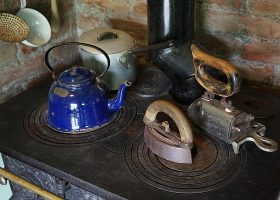By Tom Newcomb – Kamloops, B.C.
As a boy growing up on a farm in the Ridgedale, Sask. area, I’d planned on making the navy my lifetime career. I joined at age 17. As a boy seaman, I took my entry training at Esquimalt, B.C. in 1940.
I started out as a seaman torpedo man in the Aleutian Islands and went from there to England, as Leading Seaman, to commission a new destroyer, the HMCS Gatineau.

We escorted merchant ships from St. John’s, Newfoundland to Ireland. It took 10 days to cross. This is where the biggest battles took place.
I was in the biggest battle in the North Atlantic in September 1943. It lasted five days and we lost 29 ships in one convoy. We were regularly attacked by the Germans. The weather was the worst enemy, with fog, icebergs, rough seas, ice forming on the ship, and so on.
After this I went to Halifax and took a Petty Officer’s course and spent three months on the aircraft carrier, HMCS Nabob. From there I went to Eastbourne College in England, where I qualified as leading torpedo operator.
I spent two years, until the end of the war, on tribal class destroyer, HMCS Iroquois. Torpedo men used to be the electricians aboard ships, as well as firing depth charges and torpedoes.
On VE day, our ship was docked at Scapa Flow. We’d just returned from Mermansk, Russia. This convoy took us one month. On May 9, we escorted Crown Prince Olaf back to Oslo, Norway. From there, the Iroquois, along with four other destroyers, went to Copenhagen, Denmark for a week of good will. We toured the beautiful city and restaurants and had a lot of food! Cigarettes were scarce, and as we had lots of cigarettes on board, we traded them for gold watches and rings.
We went to Germany, picked up a German cruiser, Prince Eugene, and took it to Scotland as a prize of war. It was with the Bismarck when it sank.
After five-and-a-half years in the navy, I was discharged in 1946 at HMCS Unicorn, Saskatoon. Due to gunfire deafening my right ear, there went my navy career.
Life in the navy was a long, lonely, and tiring ordeal – punctuated by moments of fear and excitement – and days of seeing nothing but water. We were a close-knit group, depending on each other. Friendships lasted a lifetime!
Going back to Ridgedale, I married Toots Schmidt. We left Ridgedale to find work and settle in B.C.
Editor’s note: This story first appeared in our November 2005 issue.



